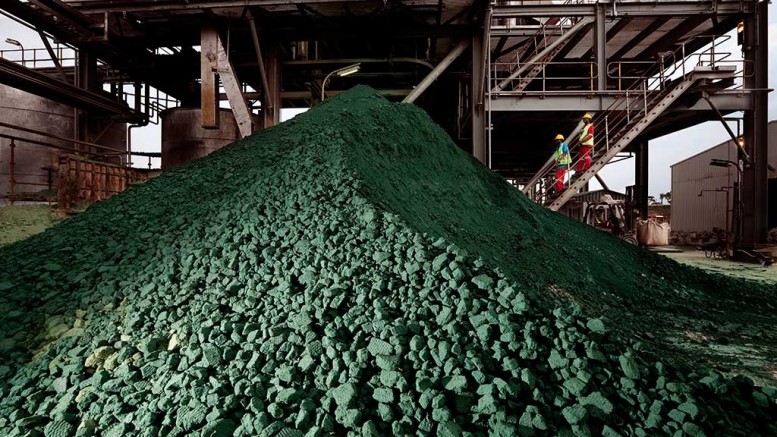Cobalt seems to be making a comeback.Current spot prices of US$17 per lb. are well above the US$10 per lb. mark of late 2015, and the metal’s steady march higher has been mirrored by moves in the price of cobalt tetroxide, a chemical used in the rechargeable battery industry, a new research report says.
Macquarie Capital says renminbi prices of cobalt tetroxide in China have doubled since mid-2016, which could mean that battery demand is improving.
“If last year was lithium’s time, for 2017 its battery-peer cobalt may be the one receiving attention,” Macquarie Capital’s London-based commodities analyst Colin Hamilton writes. “Prices have accelerated to levels last seen in 2011, and with demand from the core portable electronics sector recovering and supply growth relatively stagnant, this can be fundamentally justified.”
China has virtually no domestic metal supply, he says, and relies on the politically risky jurisdiction of the Democratic Republic of the Congo (DRC). China only produces 3% of its cobalt requirements, and of the 54,000 tonnes of cobalt it imported last year, 48,000 tonnes came from the DRC.
“The ongoing Chinese purchases of DRC assets — most notably Tenke Fungurume — are with one eye on securing supply of cobalt,” he notes. “Moreover, the prioritization of higher-quality battery development by the Chinese government may even open up the coveted new energy vehicle market to greater cobalt penetration.”
Hamilton acknowledges that the metal’s comeback has been in the works for a long time. Cobalt prices reached US$50 per lb. in 2007, before sinking to US$25 per lb. in the wake of the global financial crisis. Prices found “some stability” in 2011 and 2012, before dropping sharply in 2015.
Half of cobalt consumption goes towards making batteries. “While lithium is often thought of as the battery metal, this sector only accounts for one-third of total demand,” Hamilton notes, “and may only reach cobalt’s current levels on a five- to 10-year view.”
The analyst estimates that cobalt demand for batteries this year will increase 10% year-on-year.
Lithium-cobalt batteries are the staple of consumer electronics, including smartphones, and “continue to gain penetration in other areas, notably power tools,” he points out, adding that “this improving demand perspective clearly pressures Chinese battery manufacturers to seek more cobalt.”
While refined output in Australia, Russia and Zambia — key areas of global supply — “are well down on levels seen a decade ago,” there is a limited supply of new projects in the pipeline, and that means dependence on supply from the DRC will likely accelerate.
The problem with that scenario, the analyst says, is that the DRC is a country where “geopolitical risk is once again rising after a period of relative stability, with a transfer of presidential power due next year … which has not gone smoothly over history.
“It is also a country under increasing pressure domestically to add value to mined products in the country, and under increasing pressure internationally to clamp down on artisanal mining — with cobalt extraction the poster child for this.”Much of the cobalt in the DRC comes as a coproduct with copper, and output there “has been stagnant for the last three years.
“Given the steady downtrend in copper pricing until October last year, investment in the DRC has been limited, while certain existing assets [most notably Glencore’s operations] have seen a supply decline.


Be the first to comment on "It’s cobalt’s time to shine, Macquarie says"